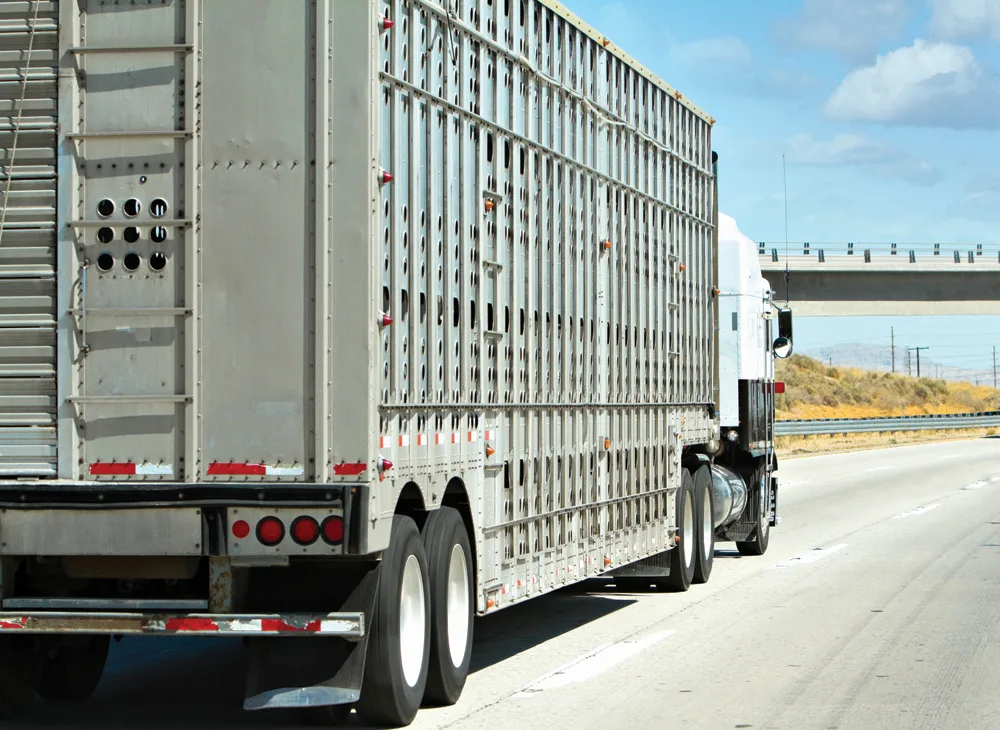There are currently four Canadian slaughterhouses and three in Mexico. At either border, the horses are unloaded for processing and then re-loaded into a sealed trailer bound for their final stop. The conditions in which they ship and the distance they travel are just a few of the problems with the current slaughter pipeline.
“I think it’s a worse solution mainly because of the distance the horses have to be transported,” said Dr. Tom Lenz, past president of the AAEP and former chair of the Unwanted Horse Coalition. “I think the transport is the big welfare issue. When I talk to people about this issue, you try and separate, ‘Are you opposed to eating horse meat, or are you concerned about how the horses are transported?’ If the latter’s the concern, we need to put into control stronger regulations. If they’re not being followed, we need to find a way to enforce them.”
Before 2007, a horse’s average journey was 550 miles from the time he was designated as “for slaughter” until he arrived at the slaughterhouse. Today an average horse traverses 753 miles of roadway before arriving at a rendering plant.
The Federal Agriculture Improvement and Reform Act of 1996 allowed the U.S. Department of Agriculture to set guidelines for humane commercial transportation of all animals to slaughter. The USDA’s Animal and Plant Health Inspection Service oversees the transport program for horses and set several regulations all shippers must follow. Horses have to be provided food, water and rest for at least six hours before they’re loaded; double-decker trailers are banned, and horses must have “adequate floor space” and ventilation; all stallions and aggressive horses must be separated from the rest of the horses; if the trip is more than 28 hours, horses have to be unloaded and allowed at least six hours of rest; all horses shipped must have an “Owner/Shipper Certificate—Fitness to Travel to a Slaughter Facility” stating that they’re more than 6 months old, not blind in both eyes, weight-bearing on all four limbs, not likely to foal and able to walk unassisted.
But the regulations set by APHIS aren’t always followed, and there’s little recourse when they’re not.
USDA only employs two APHIS staff members to oversee the horse transport, and it’s impossible for two people to do a thorough job. Shippers can be fined $5,000 per horse, per violation, but they are rarely caught. And while the rules apply for horses going across the borders, there are no regulations for how the horses are shipped to the borders.
“The laws say it’s illegal to use a double-decker trailer to transport a horse to slaughter,” said Keith Dane, director of equine protection for the Humane Society of the United States. “However, the interpretation of that is very strict, and it’s that if the horses are headed directly to the slaughter plant, then they can’t be used. But horses are designated as being for slaughter long before they get to that slaughter plant; they’re often designated at the auction where the killer buyer buys them. At that point, they can be transferred to many different locations, including feedlots, stockyards and holding areas, and so technically they can be shipped in double-deckers en route to those spots. They could be offloaded from them right at the border, and sometimes are, and that’s still a major welfare concern.
ADVERTISEMENT
“Double-deckers are the worst, but even in flat trailers, this is a business for people who ship horses,” Dane added. “Their goal is to make as much profit and send as many horses in a truckload as they can. Their goal is to cram as many horses into a small place. Horses are herd animals. Inevitably they’re going to kick and bite; they fall down and get trampled.”
The USDA recently enacted stronger regulations for the use of double-decker trailers, closing the loophole that says horses can be shipped in them if headed to an assembly point or stockyard. Another piece of legislation introduced June 28 by Sens. Mark Kirk (R—Ill.) and Frank Lautenberg (D—N.J.) and prompted by a GAO report recommendation would ban the use of double-decker trailers entirely.
Part 1: The State Of U.S. Horse Slaughter: Closing The Doors, Opening The Borders
This is the first article in a four-part series, which will run every Wednesday through Oct. 26. The original version of this article was published in the July 18 & 25, 2011, Horse Care Issue. If you enjoyed this article and would like to read more like it, consider subscribing. Check out the table of contents to see what great stories are in the magazine this week.








